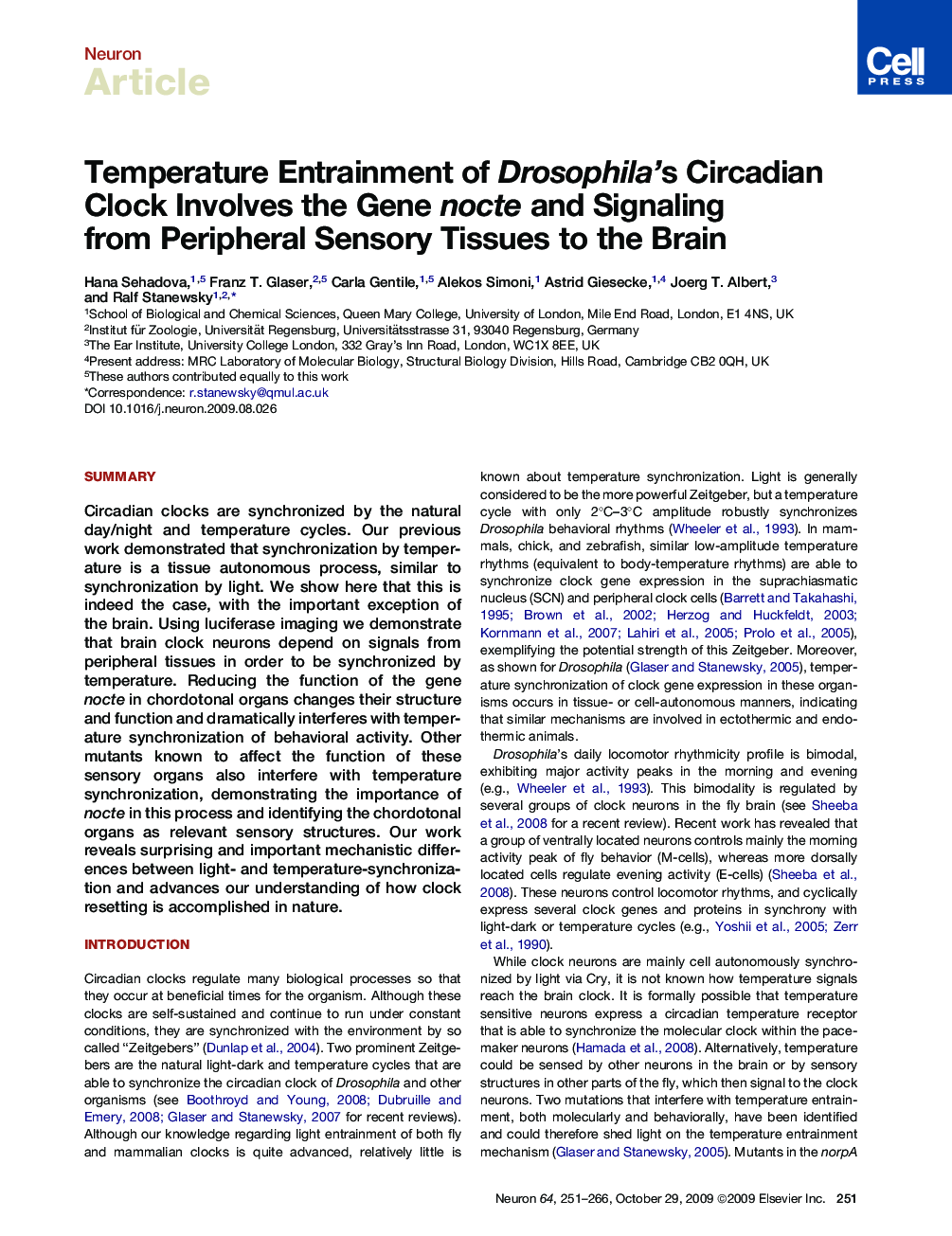| Article ID | Journal | Published Year | Pages | File Type |
|---|---|---|---|---|
| 4322109 | Neuron | 2009 | 16 Pages |
SummaryCircadian clocks are synchronized by the natural day/night and temperature cycles. Our previous work demonstrated that synchronization by temperature is a tissue autonomous process, similar to synchronization by light. We show here that this is indeed the case, with the important exception of the brain. Using luciferase imaging we demonstrate that brain clock neurons depend on signals from peripheral tissues in order to be synchronized by temperature. Reducing the function of the gene nocte in chordotonal organs changes their structure and function and dramatically interferes with temperature synchronization of behavioral activity. Other mutants known to affect the function of these sensory organs also interfere with temperature synchronization, demonstrating the importance of nocte in this process and identifying the chordotonal organs as relevant sensory structures. Our work reveals surprising and important mechanistic differences between light- and temperature-synchronization and advances our understanding of how clock resetting is accomplished in nature.
